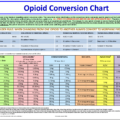Opioids, also known as narcotics, are medications prescribed by doctors to treat persistent or severe pain. They are used by people with chronic headaches and backaches, by patients recovering from surgery or experiencing severe pain associated with cancer, and by adults and children who have gotten hurt playing sports or who have been seriously injured in falls, auto accidents or other incidents.
How do opioids work?
Opioids attach to proteins called opioid receptors on nerve cells in the brain, spinal cord, gut and other parts of the body. When this happens, the opioids block pain messages sent from the body through the spinal cord to the brain. While they can effectively relieve pain, opioids carry some risks and can be highly addictive. The risk of addiction is especially high when opioids are used to manage chronic pain over a long period of time.
What is an opioid risk assessment tool?
The Opioid Risk Tool (ORT) is a brief, self-report screening tool designed for use with adult patients in primary care settings to assess risk for opioid abuse among individuals prescribed opioids for treatment of chronic pain. Patients categorized as high-risk are at increased likelihood of future abusive drug-related behavior. The ORT can be administered and scored in less than 1 minute and has been validated in both male and female patients, but not in non-pain populations.
How do people misuse prescription opioids?
Prescription opioids used for pain relief are generally safe when taken for a short time and as prescribed by a doctor, but they can be misused. People misuse prescription opioids by:
- taking the medicine in a way or dose other than prescribed
- taking someone else’s prescription medicine
- taking the medicine for the effect it causes-to get high
When misusing a prescription opioid, a person can swallow the medicine in its normal form. Sometimes people crush pills or open capsules, dissolve the powder in water, and inject the liquid into a vein. Some also snort the powder.
How do prescription opioids affect the brain?
Opioids bind to and activate opioid receptors on cells located in many areas of the brain, spinal cord, and other organs in the body, especially those involved in feelings of pain and pleasure. When opioids attach to these receptors, they block pain signals sent from the brain to the body and release large amounts of dopamine throughout the body. This release can strongly reinforce the act of taking the drug, making the user want to repeat the experience.
What are some possible effects of prescription opioids on the brain and body?
In the short term, opioids can relieve pain and make people feel relaxed and happy. However, opioids can also have harmful effects, including:
- drowsiness
- confusion
- nausea
- constipation
- euphoria
- slowed breathing
Opioid misuse can cause slowed breathing, which can cause hypoxia, a condition that results when too little oxygen reaches the brain. Hypoxia can have short- and long-term psychological and neurological effects, including coma, permanent brain damage, or death. Researchers are also investigating the long-term effects of opioid addiction on the brain, including whether damage can be reversed.
What are the other health effects of opioid medications?
Older adults are at higher risk of accidental misuse or abuse because they typically have multiple prescriptions and chronic diseases, increasing the risk of drug-drug and drug-disease interactions, as well as a slowed metabolism that affects the breakdown of drugs. Sharing drug injection equipment and having impaired judgment from drug use can increase the risk of contracting infectious diseases such as HIV and from unprotected sex. SEE: Clinical Opioid Conversion Charts, Tips, Guides and Templates Pdf





